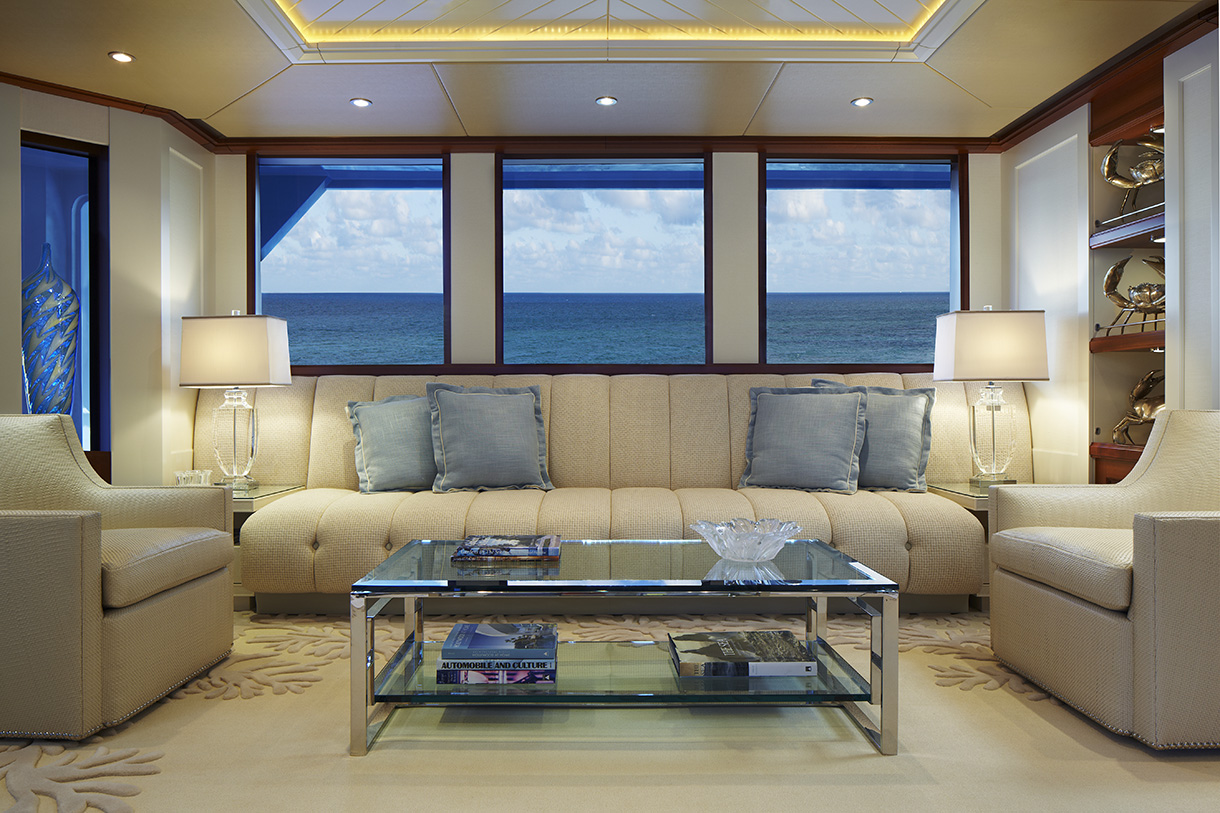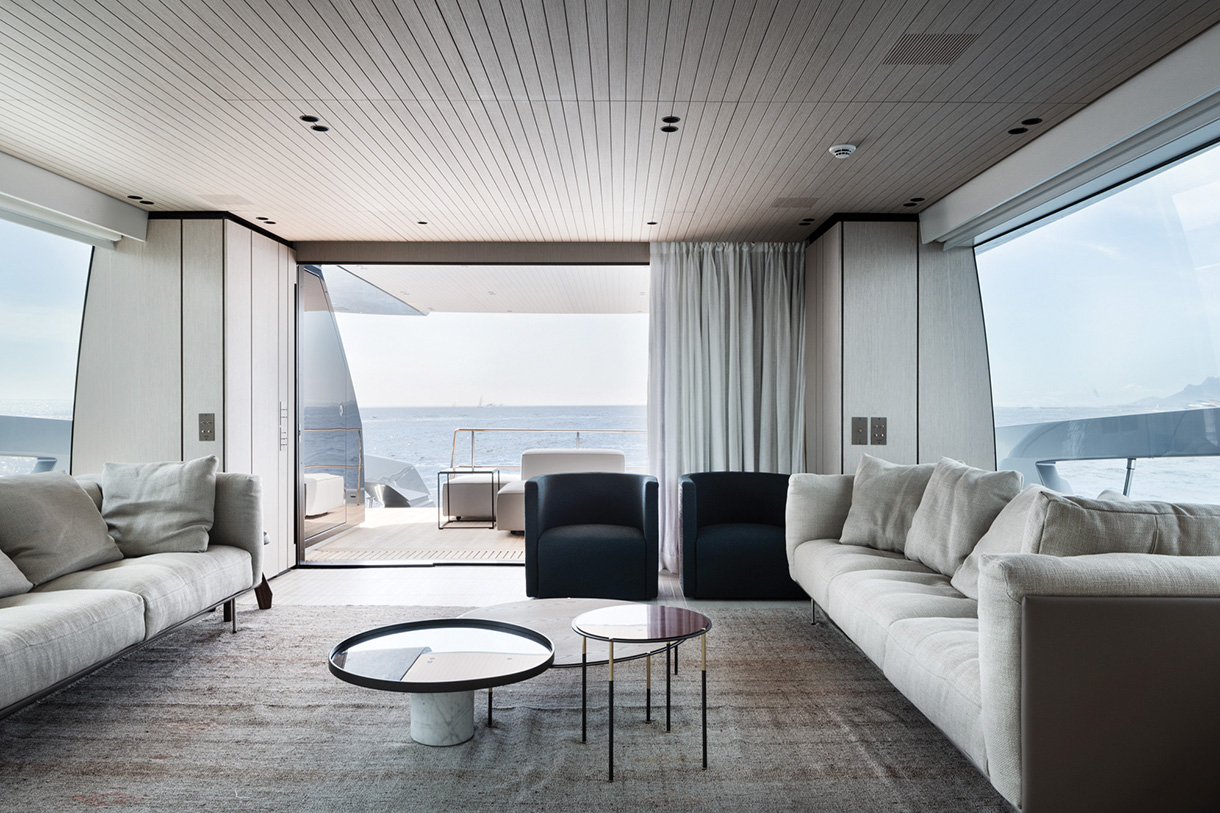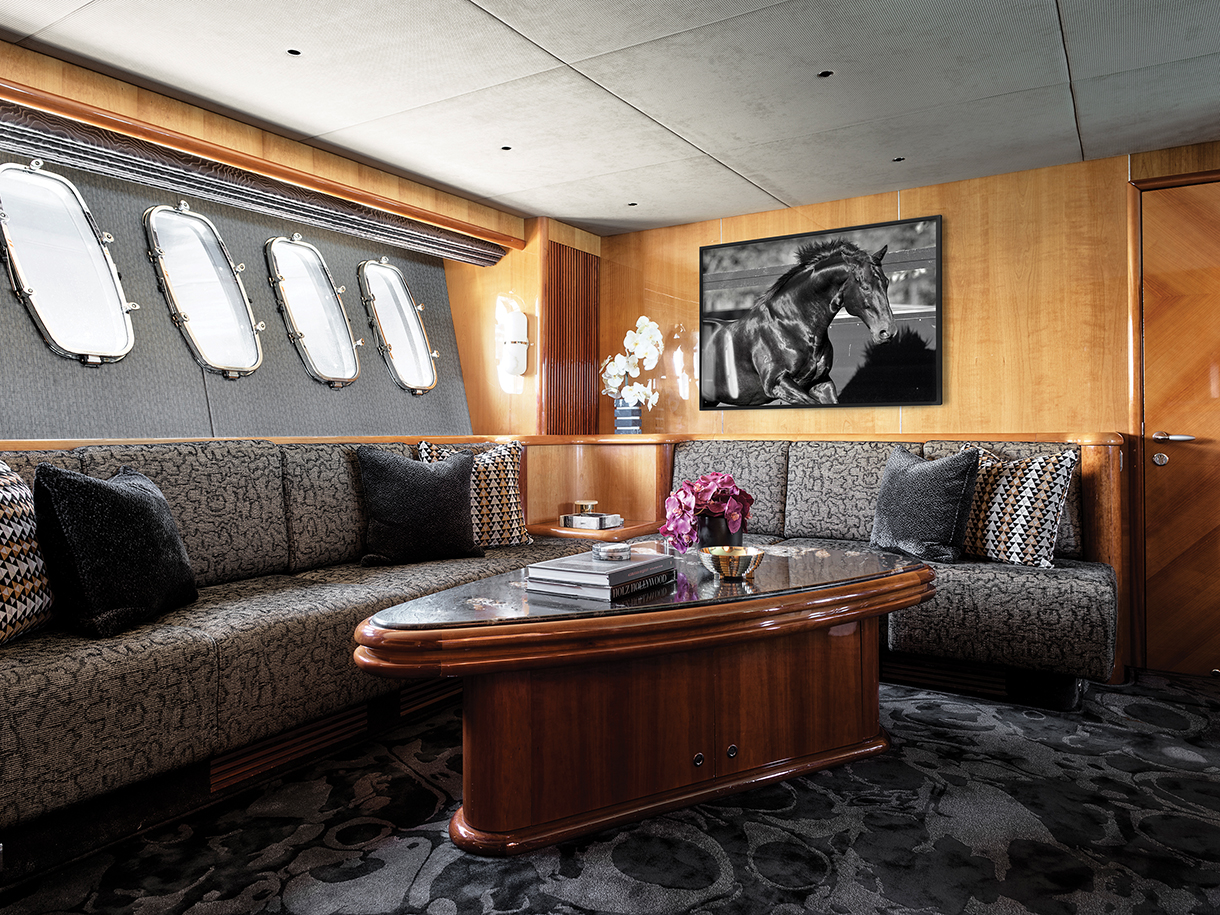
Designers at Sea
What happens when interior designers apply their signatures and skills to yacht design?
Residential and yacht interiors maintain distinctly different parameters. So, should their interior outfitting be up to residential designers or those specialized in nautical design? “The fundamental difference is that a yacht is an object in motion, with specific constraints connected to the fact that it has to travel safely in all weather and sea conditions,” says Massimo Perotti, executive chairman of Italian shipyard Sanlorenzo—which has worked with designers of every stripe, including Patricia Urquiola and Piero Lissoni (the company’s current art director). Says Perotti, “The most common mistake in designers’ projects for the interiors of boats is not taking this specific dynamism into account. The designers we have worked with so far have adapted perfectly to this reality thanks to a continuous dialogue with our shipyard.” Here, Perotti and three luxury interior designers—Australian Greg Natale, and Geoffrey Bradfield and Roric Tobin of B&T Global in New York—discuss their approaches to yacht interiors.

Mulling Over the Hull
Emphasize the hull or conceal its shape behind orthogonal interior walls?
BRADFIELD: Referencing the approach he and Tobin took with a 46-meter superyacht from Seattle-based shipyard Delta, “My preference is to ignore the shape of the hull and create a more residential feel.”
NATALE: Referring to a refresh of 29.9-meter Murcielago, a motor yacht built in 2004 by Sunseeker International in England, “I loved all those curved lines and celebrated them. In a larger yacht I might use more straight vertical walls, but I like a bit of both.”
PEROTTI: With regard to the use of extensive glass on a 24-meter SX76, which opens the yacht visually to the outside and almost renders the question of hull shape irrelevant, “The best projects always come from a compromise with the technical factors that permeate these seagoing spaces. The revolutionary open space envisioned by Piero Lissoni for the SX line, a Sanlorenzo best seller, is the result of in-depth dialogue with the habitat needs of the yacht.”

Floating Museums
A trend reported on recently in The Guardian is the display and housing of powerhouse art collections on board, which influences furniture and fabric choices designers make.
BRADFIELD: “Ironically, I am just reading The Last Leonardo by Ben Lewis, who implies that the most expensive painting in the world is semi-permanently on board Saudi prince Mohammed bin Salman’s yacht, Serene.” [Da Vinci’s recently discovered Salvator Mundi, sold by Christie’s for over $450 million.] “We have found that most collections remain on board for insurance and import-export reasons. For this yacht, we helped procure works by Fernando Botero, Claudio Bravo, Niki de Saint Phalle, and others.”
TOBIN: “These yachts are bespoke endeavors that take years to produce. You don’t want to have mediocre, filler art. That would feel like a charter, not something that’s yours.”

Material Concerns
The sky’s the limit in residential interiors. But what material palette is best for marine conditions and maintenance?
NATALE: “You’re really designing a commercial interior. You have to think that way—performance fabrics and rugs and other durable materials. My client would have loved to use brass. But on a boat, even when you lacquer it, it cracks and breaks off.”
TOBIN: “Yachts are generally taking their owners to warmer climes, so you’re not going to want heavy velvet, but you can still communicate luxury. With advancements made among performance fabrics, some of them are almost indistinguishable from interior fabrics. Also, polished metals are truly the look everyone wants on a megayacht. If you look around a marina, you’ll see every crew out there furiously polishing. Massive upkeep is something that just
comes with the territory.”
PEROTTI: “Great masters—Gino Coppedè, Gustavo Pulitzer, and Gio Ponti—were able to implement elegant Italian tastes, innovating without betraying
the nautical tradition. They mixed new habitat solutions with the best of contemporary art in their magnificent seagoing creation. The classic combination
of white and blue together with super-glossy wood, seen so frequently in the décor of yachts, are leftovers of the past. Our designers have dismantled them,
opting for unexpected finishes that gravitate around the mood of matte hues and pleasing textures closer to the atmosphere of contemporary homes than to
the nautical world.”

Connecting to Water
The way interiors relate to their marine surroundings is more nuanced today.
NATALE: “My work is very bold. For me, black is a neutral. Here it made sense for many reasons: Murcielago means ‘bat’, the boat itself is sleek black, and the owner is a family man who thinks of black as bringing warmth to where he gathers with his wife and children. The nautical relation is sensed more through fabrics that have a fluid quality to their patterns and by my ‘Ink’ rug, inspired by shapes that form when you try to mix oil with water.”
BRADFIELD: “We did use blue and white in our scheme, but the shades are subtle—ivory and beige with touches of azure on pillows and china. Custom rugs reference coral patterns (which we rendered in beige and ivory, rather than cliché fiery red), as well as nautical rope and knots. All the great passenger ships used these themes, but through exquisite materials and peerless craftsmanship, their expression was one of ultimate sophistication.”
PEROTTI: “We have increased the size of the lateral windows, bringing them closer to floor level, for a total view of the sea even from the interiors. The minimalist monochromatic palette, which almost disappears on the SX76, becomes a foil for the ocean and sky.” —Jorge S. Arango




